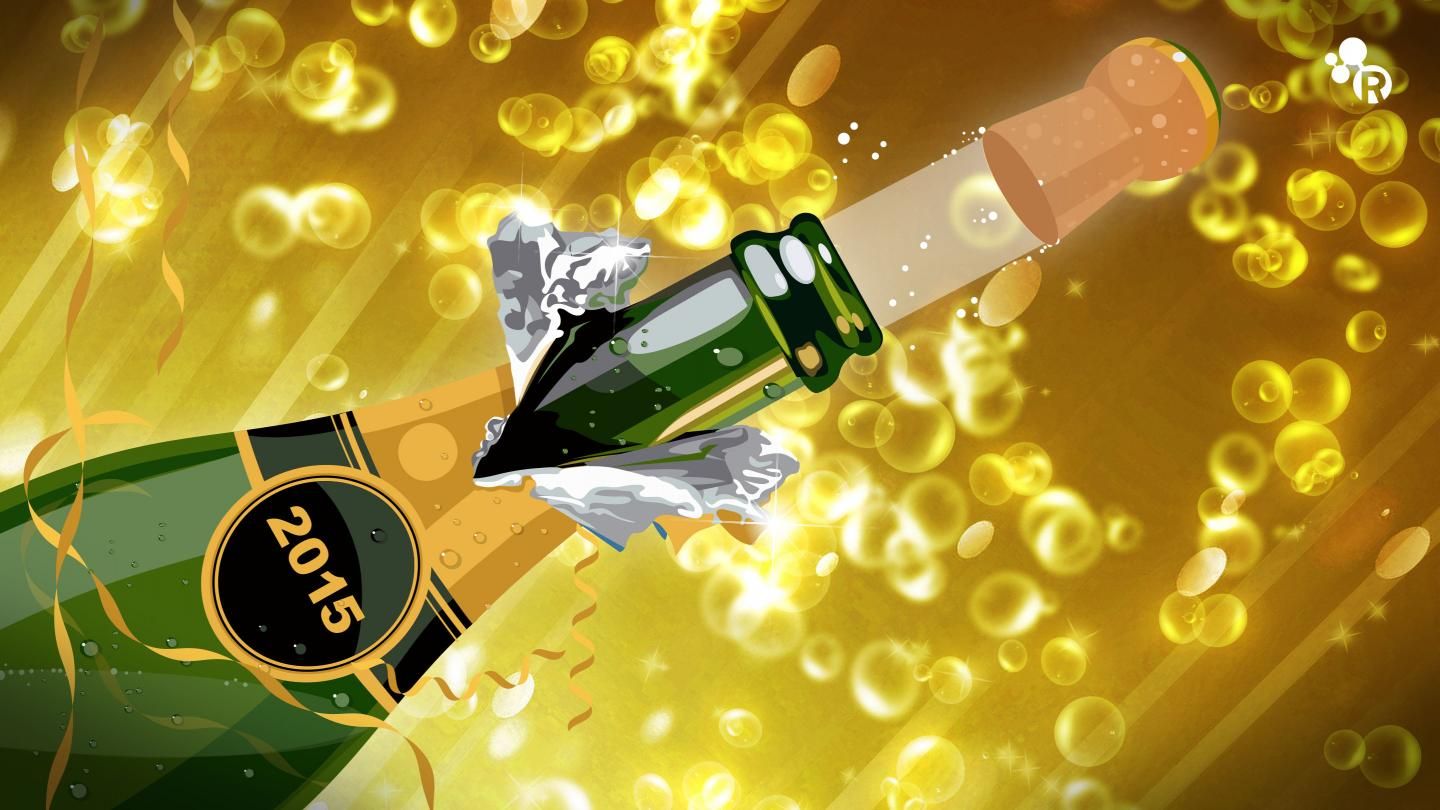
The sound of corks popping often punctuates New Year's Eve festivities, with the American Chemical Society claiming that more sparkling wine bottles are opened during the holiday season than any other time of year. But why a "pop"? And what's the fizz?
ACS devoted its weekly "Reactions" video, posted on YouTube this week, to explain what sets Champagne and other bubblies apart from a still wine. The series is designed to help people "see the chemistry that's all around them and that they may not recognize is there," says Noel Waghorn, a lead writer and producer at the ACS. Since they started the series almost a year ago, the society has enlightened the public about the chemistry underlying caffeine, cats, pizza, and the smell of bacon.
Here's a brief FAQ to prime you for New Year's party drinking and small talk.
What's in a name?
While most people blithely refer to all sparkling wines as "champagne," they're not. "What distinguishes Champagne is geography," says Waghorn. Champagne is named for the region of France from which the grapes originate, and "they're very protective of anyone else using that title." Prosecco comes from France's neighbor to the southeast, Italy, and Cava from its neighbor to the southwest, Spain. Some regions of France outside of Champagne produce Cremant. Sparkling wine is also produced in the U.S. (such as in California), Germany, Australia and Russia, according to Meninger's Wine Business International, a trade publication. In addition to using different grapes, makers also use different methods to ferment and prepare their bubblies. The ACS focused their video on Champagne, though Waghorn says many of the same concepts apply to other sparkling wines.
Where do the bubbles come from?
The fizz in sparkling wine is a result of the double fermentation process most bubblies undergo before they're ready to be sold and sipped. Yeast "gobbles up" glucose and fructose from the grape juice, the ACS says, which converts those sugars into ethanol, or alcohol, and carbon dioxide. During the second fermentation, which takes place inside the bottle, the carbon dioxide gas gets trapped inside the wine as bubbles.
Why the pop?
Pre-pop, the carbon dioxide dissolved in the liquid is equal to the pressure of gas in the space above it, between the liquid and the cork, the ACS says. When you maneuver the cork out of the bottle, the equilibrium gets thrown off. "You can see that gas escape in the little vapor" that leaves the bottle as soon as it's popped, says Waghorn. The dissolved carbon dioxide gas rises to the surface, in the form of bubbles, as part of the process to restore an equilibrium.
What's the best way to open a bottle of sparkling wine?
The flying cork of a popped Champagne bottle is entertaining in retrospect, or from afar. Ophthalmologists have warned about the potential dangers of "improper cork removal," which can cause injury. Whether you're attempting to open the bottle with a saber or in the character of a Downton Abbey butler, follow the American Academy of Ophthalmology's instructions for safely de-corking a bottle, which include chilling the drink, not shaking the bottle and removing the cork at a 45 degree angle—away from onlookers.
What's the best way to pour champagne?
Laura Maniec, a sommelier and owner of the Corkbuzz wine bar in New York, told The New York Times that a glass flute is not necessarily the best vessel for your bubbly. "If you use a white wine glass, you get a lot more flavor," she says. "You enjoy it a little bit better when you can smell it." The ACS's video cites a study published in its Journal of Agricultural and Food Chemistry that found the best way to pour wine to preserve the bubbles and flavor is on an angle rather than straight into the bottom of the glass. So tilt, pour and enjoy. Happy New Year!
Uncommon Knowledge
Newsweek is committed to challenging conventional wisdom and finding connections in the search for common ground.
Newsweek is committed to challenging conventional wisdom and finding connections in the search for common ground.
About the writer
Stav is a general assignment staff writer for Newsweek. She received the Newswomen's Club of New York's 2016 Martha Coman Front ... Read more





